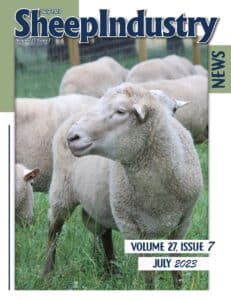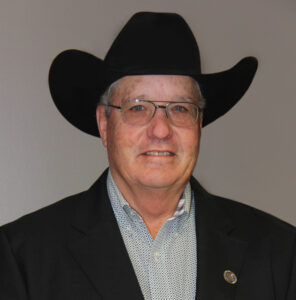As we get into the middle of summer, prices along the supply chain have maintained expected seasonal trends. Additionally, prices have begun hovering around the previous five-year averages. While prices are below last year’s levels, there is positivity in that prices seem to have found stability.
RETAIL & WHOLESALE PRICES
The one price series that has really gone against averages – and even last year’s price levels – is the all-lamb retail feature price. The all-lamb retail feature price went up from $8.03/lb. in April to $10.29/lb. in May. Historical trend does suggest that a price increase would be expected, but the rate of change to the $10.29/lb. price range is atypical.
Through the first week of June, activity is still strong in the retail space with the activity index up 23.7 percent compared to the previous week and up 33.9 percent from the same time last year. The activity index measures the frequency of featuring activity equal to the total number of stores for each advertised lamb and veal item. For example, if a retailer with 100 outlets features four lamb and veal items, then it would have an activity index of 400. This is a strong signal of retailers pushing lamb in the meat cases throughout the country. The two big features at the retail level are roasts and chops.
At the wholesale level, the net cutout is still holding steady at $434.38/per cwt., which is down compared to the average of April and May ($442.97/per cwt.). As a refresher, the cutout is the total value of a lamb carcass ($/per cwt.) based on the prices being paid for individual lamb primal cuts (i.e., rack, loin). The cutout is below last year’s price level ($565.69/per cwt.), but still $52.92/per cwt. higher than the previous five-year average. But the gap between this year and the previous five-year average is narrowing. Unless there is an uptick in the cutout value – which is possible – the cutout will begin to start settling in on the average value.
A big factor that will impact both the retail and wholesale prices, is the total supply of lamb product in the supply chain. Thus far through 2023, there have been 817,185 head slaughtered, which is 40,200 head higher than last year at this time. But the total amount thus far this year is still 56,000 head lower than the previous five-year average at this time of the year.
While we are slaughtering more, we are slaughtering at smaller dressed weights. This year, the weekly average slaughter dressed weight is 64.5 pounds, which is 4.3 percent lower than last year and 6.2 percent lower than the previous five-year average. Thus, we have produced approximately the same total product as last year – which influences the steady cutout value – and much lower in total product compared to the previous five-year average. If the retail sector continues to remain above prior year price levels, we could see an uptick in wholesale prices, which will incentivize increased slaughter numbers.
Surprisingly, Saturday slaughter total through May is at 26,440 head, which is 40 percent lower than this time last year and 82 percent lower than the previous five-year average at this time of the year.
SLAUGHTER & FEEDER PRICES
Weekly negotiated slaughter lamb prices have continued their upward and five-year average trend. Through the end of May, the negotiated slaughter lamb price was at $156/per cwt., which is approximately $9/per cwt. below the previous five-year average. Usually, negotiated prices continue to increase and peak in July. The market seems to be on trend for this to happen again.
If the trend holds true, $180/per cwt. seems to be around where we will peak in July. In the three-market average of Colorado, South Dakota and Texas, 60- to 90-pound slaughter lamb prices are also holding steady at $178/per cwt. The prices in these markets historically remain steady through the summer and early fall. Thus, prices could remain around the $178/per cwt. level if everything remains constant. In San Angelo, Texas, wooled and shorn (100- to 150-pound slaughter lamb), have risen above the previous five-year average ($149.14/per cwt.) to $179/per cwt.
In July of last year, prices in the San Angelo market were in the middle of the downward trend. Thus, in the coming months, it will be particularly interesting to watch how this market works through the summer. That is, does it follow the previous five-year trend, last year’s trend or neither. In New Holland, Penn., 100- to 150-pound slaughter lambs have been steady and averaging $269/per cwt. during the last few weeks, and started June at $290/per cwt.
With steady to higher slaughter prices, feeder prices have had mixed signals. In the three-market average of Colorado, South Dakota and Texas, feeders bottomed out midway through May at $152/per cwt., then increased for two consecutive weeks to $180/per cwt., before falling to $174.57/per cwt. midway through June. While prices are below the previous five-year average ($200/per cwt.), prices are still counter to what happened last year.
Last year, the average price in the three markets was in the middle of nine weeks of consecutive price declines. In Columbia, Tenn., 30- to 40-pound feeders remained steady at $235/per cwt. If slaughter prices continue to be steady to higher in certain markets, feeder prices could see the same up swings as we work through the summer.
WOOL
Through May, wool prices across all microns have had consecutive months of decreasing prices due to weak buyer demand in the face of large supplies, economic uncertainty and strengthening of the Australian dollar. While April and May had consecutive price decreases, in the first week of June, American wool prices across all microns went up in U.S. dollar terms by 2.8 percent to an Eastern Market Indicator of 366 USc per lb. Notably, the Australian dollar strengthened by the same 2.8 percent. The coming weeks will signal if prices have found a floor.
One the biggest drivers that impacts the U.S. wool market and the EMI is the U.S. Dollar- Australian Dollar exchange rate. The chart below displays the exchange rate. It shows the Australian dollar appreciating compared to the U.S. dollar, which in return increases the EMI for American wool. Moving forward, this exchange rate will indicate the value and prices of American wool and it will have a significant impact on prices across all microns.
The volatility in the wool market that was characteristic of the market throughout 2022 has continued through this year. In January 2022, the AWEX EMI was at 459 USc per lb. (11.5 percent above where it was in 2021). By December 2022, the EMI had dropped to 389 USc per lb., and this June it has dropped further to 366 USc per lb. (20.3 percent below where it was in January of 2022).
During this same period, the Australian dollar has weakened by 8.3 percent, which highlights the impact of the exchange rate on the wool market. Throughout this period, demand for coarser grades and lower styles of wool have also continued to be weak and the growing inventory in the United States of these wools has continued.
MOVING FORWARD
While prices in the lamb industry are relatively on par with historical trends, it’s still a positive sign compared to last year at this time. For producers – with prices remaining steady and maybe some hope of increasing – this is a positive sign with the recent rains in drought-stricken areas and decreasing input prices. While profit margins aren’t huge, they have the potential to be positive and maybe bigger as we work toward the fall.



